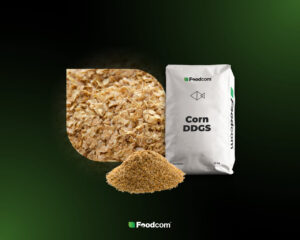- India has gone from being one of the world’s key maize exporters to a significant importer this year.
- The reason is the increased demand for maize for bioethanol production.
- The shortage of maize, especially in the poultry industry, has resulted in an increase in the price of this grain.
Maize price rise due to increased demand in India
India has been a significant exporter of maize in Asia for years. For the first time in decades, this dynamic has changed, turning the country into an importer of this grain. Exports are set to drop from 2-4 million tonnes to 450,000, while imports will be as high as 1 million tonnes this year. Such a change has resulted in a disruption of the supply chain, raising maize prices in India and problems especially in the poultry industry, which uses maize as feed. Poultry producers are calling for the government to lift the duty on maize imports and the ban on GM maize, which would allow imports from, for example, Ukraine. Domestic production of 36 million tonnes met the country’s demand for maize, particularly from the poultry industry, but is insufficient for the expanding demand of bioethanol factories, which could be 6-8 million tonnes per year.
The reason for the rising prices is the increased demand for bioethanol produced from maize, which has to do with the ethanol blending programme for petrol. In January, there was an increase in the price of ethanol produced from maize. The reason for this was the government’s desire to move away from ethanol produced from sugar cane due to the drought and to ensure the availability of cheap sugar for food purposes. The rise in maize prices will bolster global prices, which are close to four-year lows. Asian countries previously importing maize from India are now forced to reach out to US markets.
Increasing demand for maize bioethanol for fuel production
The programme to introduce ethanol blending into petrol in India began in 2020. The aim was to initially introduce E5 and E10 fuels containing 5% and 10% bioethanol respectively, followed by E20 fuel containing 20% bioethanol in March 2026. E20 petrol should be widely available by 2030. The introduction of greener fuels is crucial not only to protect the environment through the transition to a low-carbon economy, but also to ensure India’s energy security.
Indian bioethanol producers are steadily increasing their production capacity, which made it possible to cross the 15% ethanol content threshold in the fuel in May this year. However, to meet the demand for bioethanol and meet the target of 20% ethanol content in the fuel, increased imports of maize into India will be required. After the transition from sugarcane-based to maize-based ethanol, the next step will be to look for technology to produce ethanol from non-food feedstocks.






